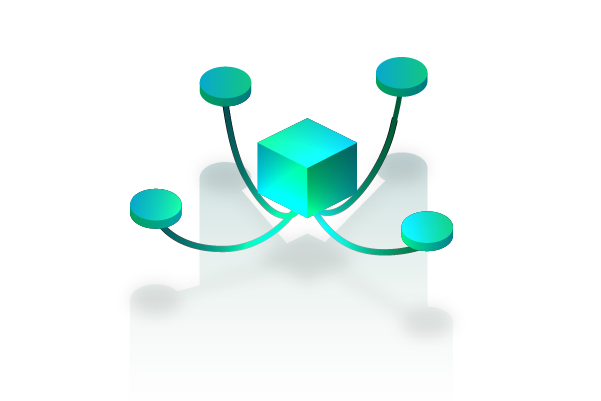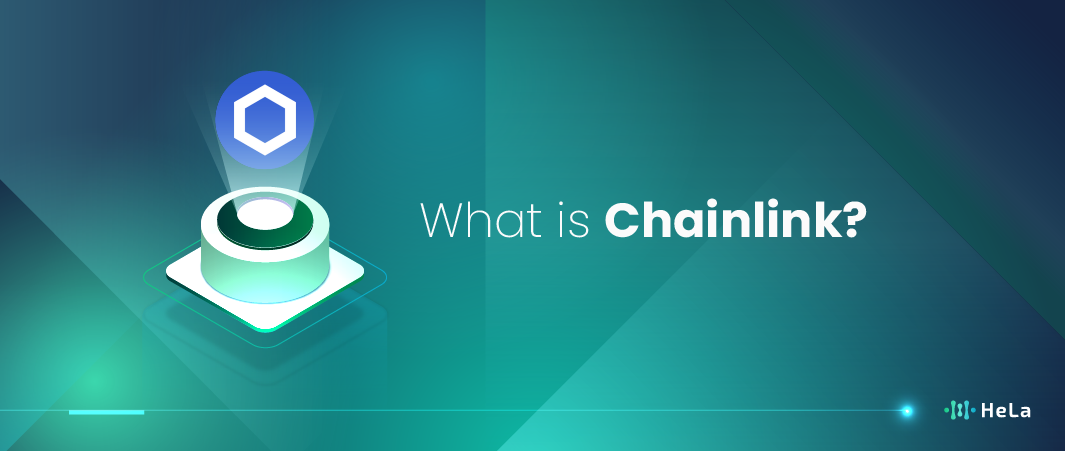Chainlink has emerged as a pivotal technology in the blockchain space, aiming to connect smart contracts with real-world data. But what exactly is Chainlink, and why has it become so important? This article will delve into the workings of Chainlink, exploring its unique role in the blockchain ecosystem and its implications for the future of decentralized applications.
At its core, Chainlink is a decentralized oracle network designed to provide external data to smart contracts on various blockchain platforms. This solves a fundamental problem: while blockchains are excellent at ensuring data integrity within their networks, they struggle to securely interact with external data sources. Chainlink steps in as a bridge between these two worlds, enabling smart contracts to execute based on real-world information reliably.
Understanding Chainlink is crucial for anyone interested in the blockchain and cryptocurrency sectors, as it plays a critical role in enabling the practical and widespread adoption of smart contracts. By providing a reliable way to bring external data onto the blockchain, Chainlink expands the potential applications of smart contracts far beyond what was previously imagined, making them more useful and relevant across various industries.
What is Chainlink?

Chainlink is a decentralized oracle network designed to bridge the gap between blockchain smart contracts and real-world data. Its core purpose is to enable smart contracts on various blockchain platforms to interact securely with external data feeds, events, and payment methods. This connection is vital because, by design, smart contracts cannot access data outside their network or blockchain.
Overview of Decentralized Oracle Networks
Decentralized Oracle Networks (DONs) like Chainlink play a crucial role in the blockchain ecosystem by providing a reliable and secure way to feed external data into smart contracts. Oracles are middleware that act as data feeds for blockchains, but relying on a single source of truth can lead to centralization and security risks.
Chainlink addresses these challenges by decentralizing the data retrieval process, using multiple oracles to validate and aggregate data before it’s delivered to the smart contract. This method enhances the security and reliability of the data, ensuring that smart contracts operate based on accurate and timely information.
Also Read: 12 Top Market Making Companies to Consider in 2024
How Chainlink Connects with Different Blockchains
Chainlink is blockchain-agnostic, meaning it can connect with any blockchain. This flexibility is achieved through its network of oracles, which are independently operated nodes that can communicate with multiple blockchains and external data sources. When a smart contract requires data, it submits a request to the Chainlink network. The network then aggregates responses from multiple oracles to ensure data accuracy and reliability before returning the aggregated data to the smart contract.
This ability to interact with various data sources and blockchains makes Chainlink a critical infrastructure piece for enabling complex, real-world applications on blockchain platforms. It allows for the creation of more advanced and useful decentralized applications (DApps), such as those requiring financial market data, weather information, and even the outcomes of sporting events, to operate autonomously and reliably in a decentralized environment.
How Chainlink Works?

Chainlink is a decentralized oracle network designed to connect smart contracts on various blockchain platforms with data from the external world. It acts as a bridge between blockchains and external data sources, enabling smart contracts to securely interact with off-chain data feeds, web APIs, and traditional bank payments. Understanding how Chainlink works involves exploring its technical mechanics, the role of LINK tokens within the network, and its key features like data feeds, off-chain computation, and node operators.
The Technical Mechanics of Chainlink
At its core, Chainlink uses a network of decentralized oracle nodes to provide reliable, tamper-proof data to smart contracts. These oracles are third-party services that fetch and verify real-world data and submit this information to blockchain networks. To ensure data accuracy and reliability, Chainlink employs a reputation system and aggregates data from multiple oracles before delivering it to the smart contract. This process mitigates the risk of any single point of failure and ensures the integrity of data.
The Role of LINK Tokens within the Network
LINK tokens are an integral part of the Chainlink ecosystem. They are used as a form of payment for node operators who retrieve, compute, and provide data to the blockchain. The use of LINK tokens incentivizes the oracle providers to supply accurate and timely data, as their compensation is tied to their performance. Moreover, LINK tokens are required to participate in the network either as a node operator or to place data requests, creating a self-sustaining economic model that ensures the network’s growth and reliability.
Understanding Data Feeds, Off-Chain Computation, and Node Operators
- Data Feeds: Chainlink data feeds are streams of data points that provide real-time information from various external sources to smart contracts. These feeds can include information such as cryptocurrency prices, weather conditions, and financial market data. Data feeds are critical for DeFi applications, which require up-to-date and accurate information to execute transactions or smart contract functions.
- Off-Chain Computation: Chainlink enables off-chain computation through its decentralized oracle network. This feature allows smart contracts to execute complex calculations off-chain before any data is sent back to the blockchain. This approach significantly reduces the computational burden on the blockchain and allows for more complex smart contract applications without sacrificing security or decentralization.
- Node Operators: Node operators are individuals or entities that run Chainlink oracle nodes. They are responsible for retrieving external data, processing requests from smart contracts, and submitting responses back to the blockchain. Node operators are selected based on their reputation, which is determined by their historical performance, including the accuracy and timeliness of their data submissions. This selection mechanism ensures that only reliable operators contribute to the network, maintaining the quality and trustworthiness of the data provided.
Chainlink’s architecture and its components work in harmony to provide a robust and flexible framework for decentralized oracle services. This system not only enhances the functionality of smart contracts but also opens up new possibilities for blockchain applications that can securely interact with the real world.
The Importance of Chainlink in the Blockchain Ecosystem

Chainlink has emerged as a pivotal infrastructure within the blockchain ecosystem, fundamentally enhancing the way smart contracts operate and interact with the real world. By providing a reliable bridge between on-chain and off-chain environments, Chainlink enables smart contracts to securely access external data feeds, web APIs, and traditional bank payment systems. This capability is crucial for the realization of fully functional, real-world applications on blockchain platforms.
Chainlink’s Role in Enabling Smart Contracts to Interact with the Real World
Smart contracts are self-executing contracts with the terms of the agreement between buyer and seller being directly written into lines of code. While they are revolutionary, their functionality was initially limited to the data available on their respective blockchain.
Chainlink addresses this limitation by serving as a decentralized oracle network, which allows smart contracts to securely interact with external data sources, APIs, and payment systems. This interaction is vital for the execution of complex, real-world agreements that depend on external data, such as price feeds, weather conditions, or geographical locations.
Examples of Chainlink in Action: Finance, Insurance, and Supply Chain
In finance, Chainlink is used to provide real-time data feeds for cryptocurrencies, fiat currencies, and commodities, enabling decentralized finance (DeFi) platforms to offer products such as dynamic loans, stablecoins, and automated asset management. In the insurance sector, Chainlink enables smart contracts to automatically verify claims and initiate payouts based on data from external sources, such as weather stations for crop insurance or flight data for travel insurance. In the realm of supply chain management, Chainlink can track products from production to delivery by integrating data from various systems, ensuring transparency and authenticity.
The Impact of Chainlink on the Reliability and Security of Smart Contracts
Chainlink significantly enhances the reliability and security of smart contracts by decentralizing the process of fetching external data. By doing so, it mitigates the risks associated with single points of failure, which are common in centralized oracle services. Chainlink’s network of oracles is designed to ensure data integrity, with mechanisms in place to validate data sources and aggregate data to prevent manipulation. This level of security and reliability is critical for the adoption of blockchain technology in sectors where trust and data accuracy are paramount.
Overall, Chainlink plays an indispensable role in bridging the gap between the inherent capabilities of smart contracts and the complexities of real-world applications. Its impact extends beyond just enhancing smart contracts, contributing to the broader adoption and maturity of blockchain technology across various industries.
Also Read: 10 Top LSDFi Coins to Consider in 2024
Challenges and Solutions
Chainlink, as a decentralized oracle network, aims to bridge the gap between blockchain smart contracts and real-world data. However, like many innovations in the blockchain space, it faces several challenges:
- Data Accuracy and Reliability: Ensuring the data fed into smart contracts is accurate and reliable is crucial. Inaccurate data can lead to incorrect contract executions, potentially resulting in financial losses.
- Security Vulnerabilities: The decentralized nature of blockchain technologies, while offering advantages in transparency and security, also presents challenges in maintaining robust defenses against attacks, such as oracle manipulation or smart contract vulnerabilities.
- Scalability and Efficiency: As the adoption of blockchain technologies grows, scalability becomes a critical issue. High transaction costs and slow processing times can hinder widespread adoption.
- Integration with Traditional Systems: Many real-world applications require interaction with traditional systems, which may not always be straightforward due to differences in technology and standards.
How Chainlink Addresses Issues of Data Reliability and Security
Chainlink addresses these challenges through several innovative approaches:
- Decentralized Data Aggregation: By aggregating data from multiple sources, Chainlink reduces the risk of reliance on a single point of failure, enhancing data reliability and accuracy.
- Secure Node Operators: Chainlink incentivizes a network of secure, reliable node operators through a system of rewards and penalties, ensuring high-quality data feeds and robust security practices.
- Cryptography and Trust Minimization: Implementing advanced cryptographic techniques, Chainlink ensures the integrity of data transmitted from external sources to blockchain networks, minimizing trust in any single party.
- Flexible and Adaptable Framework: Chainlink’s architecture allows for seamless integration with various blockchains and external data sources, facilitating broader adoption and versatility in applications.
Future Developments and Potential Improvements
Looking ahead, Chainlink plans to introduce several developments to address existing challenges further and unlock new possibilities:
- Enhanced Scalability Solutions: Chainlink is exploring Layer 2 solutions and off-chain computation to reduce costs and increase transaction speeds, making blockchain applications more efficient and scalable.
- Advanced Security Features: Continuous research and development in cryptographic techniques and security protocols aim to fortify the network against emerging threats and vulnerabilities.
- Cross-Chain Interoperability: Efforts to enhance interoperability between different blockchain platforms will allow Chainlink to serve a wider range of applications, fostering a more interconnected and versatile blockchain ecosystem.
- Dynamic and Customizable Oracles: Innovations in oracle design will enable more dynamic and customizable data feeds, allowing developers to tailor data sources and aggregation methods to their specific needs, enhancing the flexibility and efficiency of smart contracts.
As Chainlink and the blockchain community continue to evolve, the focus on overcoming these challenges through innovation and collaboration paves the way for a more secure, efficient, and interconnected future in decentralized technologies.
Comparing Chainlink with Other Oracle Services
Chainlink is a prominent player in the blockchain oracle space, providing external data to smart contracts on various blockchain platforms. The competitive landscape includes other oracle services such as Band Protocol, API3, Tellor, and Oraichain, among others. Each of these services offers a unique approach to delivering external data to blockchain networks, with differences in decentralization levels, data sources, security mechanisms, and integration capabilities.
Key Features:
- Decentralization and Security: Chainlink utilizes a decentralized network of nodes to fetch and verify data, enhancing security and reducing the risk of manipulation.
- Wide Adoption and Partnerships: Chainlink boasts a broad range of partnerships across various industries, including finance, insurance, and technology, contributing to its widespread use and integration.
- Flexible and Robust Infrastructure: Chainlink supports numerous blockchain platforms and allows for the integration of any external data source, providing flexibility for developers.
- Active Development Community: The project benefits from a strong and active development community, continually improving the platform and expanding its capabilities.
Strengths:
- Versatility: Chainlink’s ability to integrate with multiple blockchains and data sources makes it one of the most versatile oracle solutions available.
- Security: The decentralized nature of Chainlink’s network and its secure node operators provide a high level of security and reliability.
- Market Leadership: With extensive partnerships and a solid track record, Chainlink is considered a leader in the oracle space, which contributes to its credibility and trustworthiness.
Weaknesses:
- Complexity and Cost: The sophistication of Chainlink’s network can introduce complexity for developers. Additionally, the cost of using Chainlink, especially in terms of gas fees on networks like Ethereum, can be high compared to some competitors.
- Competition and Innovation: The rapidly evolving nature of the blockchain space means that newer oracle solutions may introduce innovative features that challenge Chainlink’s dominance.
- Dependence on External Nodes: While decentralization is a strength, Chainlink’s reliance on external nodes introduces a point of vulnerability, as the performance and honesty of these nodes are critical to the network’s reliability.
Chainlink stands out in the oracle space due to its robustness, security, and versatility. However, like any technology, it faces challenges from the cost and complexity of its operations and the continuous innovation from competitors. Understanding these dynamics is crucial for stakeholders considering oracle services for their blockchain applications.
Conclusion
Chainlink represents a significant leap forward in the quest to make blockchain technology practical and applicable in the real world. By securely and reliably linking real-world data with smart contracts, Chainlink opens up a world of possibilities for developers, businesses, and users alike. Its innovative approach to solving the oracle problem has established it as a key player in the blockchain ecosystem, with potential impacts that extend far beyond its current applications.
However, like any pioneering technology, Chainlink faces challenges, including data reliability, network security, and scalability. Addressing these challenges head-on, Chainlink continues to evolve, driven by a community of developers and enthusiasts passionate about its potential to change the way we interact with the digital world.
As blockchain technology continues to mature, the role of Chainlink and similar technologies will become increasingly important. They offer a glimpse into a future where decentralized applications can securely and efficiently interact with the real world, paving the way for more innovative, efficient, and transparent systems across industries. Chainlink does not just represent a technical solution; it embodies the spirit of innovation and collaboration that drives the blockchain community forward.
Disclaimer: The information provided by HeLa Labs in this article is intended for general informational purposes and does not reflect the company’s opinion. It is not intended as investment advice or recommendations. Readers are strongly advised to conduct their own through research and consult with a qualified financial advisor before making any financial decisions.

Joshua Soriano
I am a writer specializing in decentralized systems, digital assets, and Web3 innovation. I develop research-driven explainers, case studies, and thought leadership that connect blockchain infrastructure, smart contract design, and tokenization models to real-world outcomes.
My work focuses on translating complex technical concepts into clear, actionable narratives for builders, businesses, and investors, highlighting transparency, security, and operational efficiency. Each piece blends primary-source research, protocol documentation, and practitioner insights to surface what matters for adoption and risk reduction, helping teams make informed decisions with precise, accessible content.

